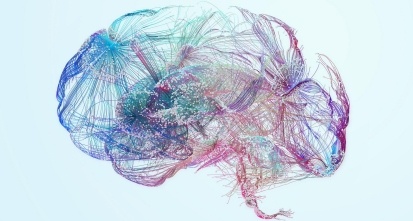Gain new perspectives for faster progress directly to your inbox.
Scientific progress is accelerating quickly, with new discoveries happening every day. CAS has a unique view of the scientific landscape, both historical and current, allowing insight into the emerging trends to watch this year. Recently, experts from Lawrence Livermore National Laboratory, The Ohio State University, Oak Ridge National Laboratory, and CAS joined together for a webinar on January 25 to highlight the scientific breakthroughs and trends to watch in 2024.
Discover the latest developments on tackling the undruggable, AI’s impact in R&D, the rise of biomaterials, energy storage techniques, and fusion energy innovations by watching this webinar. Learn more valuable insights into new trends in our recent article.
Key highlights from the webinar
To start the discussion, Janet provided key advancements and emerging trends on tackling the undruggable. Neurodegenerative diseases, pharmaceutical advancements for Alzheimer’s disease, and a biomarker validation breakthrough for Parkison’s disease were addressed. These breakthroughs, based on the biological causes of the disease, are pivotal in the journey to a cure. Antibody-drug conjugates (ADCs) were also explored as an approach in the research and development of antitumor agents. ADC patent publication trends rapidly increased in the past few years as researchers found options for treating previously undruggable targets for cancers and more.
Dr. Jonathan Allen continued the discussion by sharing his experience with AI and machine learning in drug discovery. Recently, increasing the ability to automate the synthesis of new biological and small molecule entities has become a key emerging trend and is changing the paradigm of searching for new pharmaceuticals. Using AI and machine learning is helping to evaluate possible drug targets and predict how new drugs will respond within the human body. Lastly, examples of clinical success, including small molecule Investigational new drug filings, target potency, promising pharmacokinetic profiles, antibody redesign, and protein folding prediction were discussed.
At the intersection of biomedicine and materials science, Dr. Kevin Hughes discussed innovation in this space and a quantitative method to review emerging trends. Analysis of the CAS Content Collection™ revealed eight key areas with the fastest growth within the biomaterials area. These topics included self-healing biomaterials, lipid-based materials, and bioinks amongst others. Rounding out the conversation was a more in-depth trend analysis for programmable biomaterials, which revealed the most frequent biomaterial stimuli used in both journal and patent publications.
Dr. Yiying Wu transitioned the webinar to the materials realm by discussing trends in battery energy storage. Many new battery trends have been seen recently, with lithium-ion batteries, solid-state batteries, sodium and potassium-based batteries, sulfur batteries, and even oxygen batteries. Each builds upon or helps solve a challenge from a cell chemistry perspective. Beyond cell chemistry, manufacturing technologies, supply chains, battery recycling, and safety concluded the discussion.
Dr. Arnold Lumsdaine finished off the webinar with the topic of fusion energy. He started with a call to action that the future of civilization depends on energy and the urgent need for carbon-free energy sources to meet the world’s growing energy needs. Many events, including scientific improvements, mindset and political will, technological improvements, advanced manufacturing, high-performance computing, advances in materials, and significant private investments, are all bringing fusion energy into a new age. Fusion energy processes were then highlighted alongside challenges within plasma physics, materials, and engineering.
To wrap up, attendees asked many questions, from the fundamental difference between AI and machine learning to how fusion energy and lithium-ion batteries fit into a greener future with electric cars. In short, this panel highlighted many emerging topics worth watching to help shape future R&D opportunities.
Key questions from the webinar are below for reference:
What are the fundamental differences between artificial intelligence (AI) and machine learning?
- Machine learning is focused on past specific problem solving (statistical data-driven models focused on predicting a specific property); AI would be a superset of that in theory augmenting what the person does.
- A comparative example would be an AI chemist, which would be a system that could propose new molecules and decide which molecules to make and test, and the machine learning model would be evaluating how successful the system is at carrying out those tasks.
The biomaterial folding box was published in 2011. Has there been an update on the application or progress since then?
- Two main areas of progress I’d highlight since then:
- 3D printing with stimuli-responsive materials, which has led to the emergence of the new field of “4D printing”
- The use of nanoscale materials to generate new types of stimulus-response. A good example of this is the development of a biomimetic hydrogel “swimmer” that oscillates in response to visible light by integrating photothermally active gold nanoparticles with temperature-responsive poly (N-isopropyl acrylamide)
How does the work on Lithium batteries or Fusion energy fit into the U.S. plans to push for more use of electric vehicles?
- Some limitations will have to be overcome before more applications of electric vehicles become mainstream such as concerns with mining, charging times for batteries, and extreme condition effects on batteries.
- Fusion will be a carbon-free source of electricity. However, since lithium is a required element of the fusion fuel cycle (in order to breed tritium), the lithium supply could become an issue.
How is that energy provided now for EVs (ex. coal or ???), and how will it be provided in the future?
- Electric vehicles are only as clean as the grid that they draw from, so if the grid is using 100% coal and natural gas then electric vehicles are not clean and carbon neutral.
- Currently, the United States uses fossil fuels, nuclear, renewable energy, and other sources to fuel its grid with fusion energy being a possibility in the future. Discover more about the future of nuclear energy, hydrogen energy, and li-ion battery recycling in our recent Insights article.
Is anyone studying biologic nanotechnology like exosomes?
- Yes, exosomes are being studied for their use as drug delivery systems and for their therapeutic potential. Exosome therapeutic companies are researching the treatment of diseases such as cancer, neurological diseases, lung diseases, and wound healing, amongst others. Read more about exosomes and their emerging opportunities in our recent CAS Insight Report based on a recent peer-reviewed publication in ACS Nano.
Is there research showing a general comparison between the efficiency of using generative AI to help with the screening process for new drugs vs. the traditional HTS? (a comparison perhaps between hits determined with the help of AI/ML versus hits via HTS)
- It would be great to see a rigorous side-by-side comparison that we have not seen yet and would be difficult. On the high throughput screening side, the use of DNA encoding libraries where combinatorial testing can be done with billions of chemicals is being done. When doing this, there is always an option to build a machine learning model that is learning from the HTS data and help sort through the results, combining these two methods to work together to produce better results.
See the recording and the associated slides from the webinar here.




